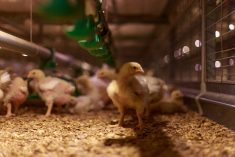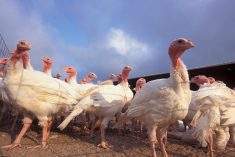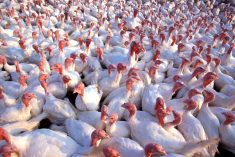Federal officials expect southwestern Ontario’s avian flu quarantines and control zones to stay in place for “several” more weeks yet.
The Feather Board Command Centre (FBCC), the emergency response office for Ontario’s poultry and egg sector boards, said June 19 it’s been told by the Canadian Food Inspection Agency (CFIA) the “original projected timelines are no longer accurate” for the quarantines to end.
“Recovery efforts continue” in the province, the FBCC said, but the control zones — which restrict movement of birds and equipment at and near the province’s three affected farms — remain in place.
Read Also

Alberta crop conditions improve: report
Varied precipitation and warm temperatures were generally beneficial for crop development across Alberta during the week ended July 8, according to the latest provincial crop report released July 11.
The province between April 5 and 23 reported three cases of highly pathogenic (“high-path”) H5N2 avian flu, on two turkey farms and a broiler breeder operation. All three farms were “depopulated” of birds by April 26.
British Columbia’s outbreak, which saw 11 commercial poultry and egg farms and two “non-commercial” farms infected, mostly in December 2014, saw seven quarantines lifted in February and the remaining six lifted by March 25.
B.C. was declared formally free of notifiable avian flu by June 3.
In affected areas of Ontario, some of the FBCC’s restrictions have since been “modified” and “regular business activities” such as farm audits and farmer meetings outside the quarantine zones have resumed.
However, the FBCC noted in its release, many summer and fall community events, which traditionally would have featured live birds, are suspending live bird-related events until further notice.
“In respect to biosecurity, there is no ‘going back to normal,'” FBCC incident commander Dr. Tom Baker said in the centre’s statement.
“We have gained a new understanding of the many ways avian influenza virus can penetrate our current biosecurity systems. Protecting our poultry from this new risk will require us to further advance our already high standards and work diligently as a united industry.”
While the province “continues to manage what will hopefully turn out to be only a limited disease outbreak,” the U.S. avian flu situation “continues to concern the industry,” the centre said.
The U.S. has seen 223 farms across 15 states with high-path avian flu since last December, leading to depopulation of just over 48 million birds. The most recent confirmed case was reported June 17 in Iowa.
The introduction and spread of high-path H5N2 in the U.S. has been attributed to migratory birds, the FBCC said, but “experts now consider that the rapid spread of the disease in the U.S. has a lot to do with serious biosecurity breaches at the barn level and the ability of the virus to spread by air currents.” –– AGCanada.com Network















